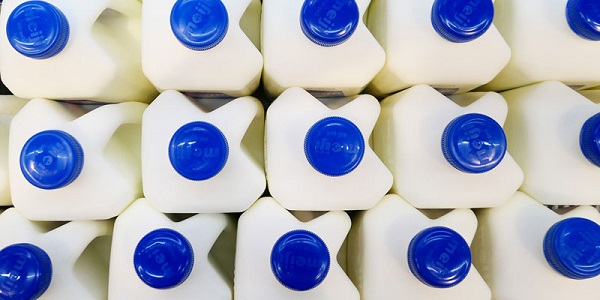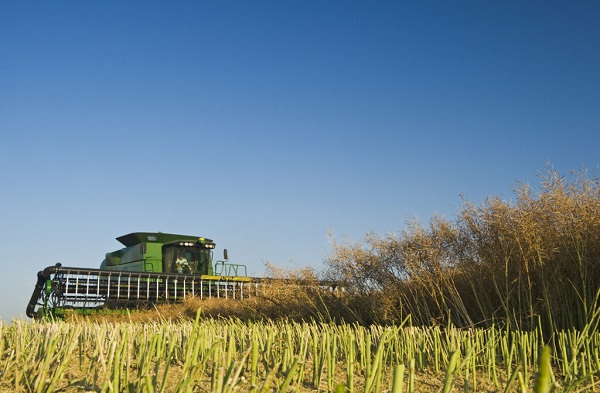Agriculture
Canada’s Feedlots Facing an Uncertain Future

Canada’s Feedlots Facing an Uncertain Future
The coronavirus has taken a huge toll on the North American meat industry. As the virus continues to claim the lives of workers and workplace conditions become unsafe, many meat processing plants simply haven’t been able to adequately staff their facilities. Subsequently, many plants and feedlots — including leading brands in Alberta — have temporarily shut down operations.
Other big names that haven’t experienced outbreaks in their facilities have managed to remain open or at least reopen and function at a lower capacity. However, even these cattle feedlots and processing plants are facing an uncertain future as the pandemic drags on.
A Dip in Demand
In addition to facility outbreaks, a dip in demand for pork, poultry and beef has also resulted in major setbacks for feedlots and slaughterhouses. Since officials issued stay-at-home orders three months ago, restaurants and butchers haven’t been ordering as much meat from big-industry meat processors. Instead, with no guests to serve or customers to whom they might sell prime cuts, these businesses have dramatically cut their orders.
Of course, the meat industry wasn’t expecting this sudden decrease in demand. As cows continued to birth calves and inventory built up in feedlots, these companies were left with no other choice than to cull thousands of animals per day and discard the carcasses. Obviously, this represents a massive amount of waste as well as a huge loss of profit.
Selling Calves
Many small farmers and large industrial developments also worry they’ll lose money this fall when it comes time to sell calves. These cow-calf operations usually generate a decent amount of revenue when the economy is good. In light of recent events, however, market conditions aren’t exactly prime for selling calves.
Moreover, as feedlots reach and exceed maximum capacities, the animals will most likely become more anxious. This increase in stress levels will negatively impact their immune systems and, ultimately, the quality of meat that comes from them. Consequently, this fall’s herd may not be as healthy as the last, meaning they’ll sell for much less and leave feedlots and meat processors in the red.
Assistance and Adjustments
Early last month, the Canadian government announced it would provide $252 million in federal assistance to the agri-food sector. The vast majority of this federal aid will go to processing plants in hopes of better-protecting workers and helping facilities function at full capacity once again. Still, as long as demand is low, it’s unlikely the industry will bounce back quickly — even with financial assistance. At best, this money will help keep the industry afloat until restaurants and eateries fully reopen.
Additionally, meat processing plants that have remained open or resumed operations are beginning to consciously cut their inventory and production output to meet the decrease in demand. While this will help the meat industry, it may cause issues for fast-food chains and restaurants that may experience shortages as a result.
Is the Worst Yet to Come?
Over the past few weeks, some major meat processors and cattle feedlots have begun to reopen. Already, they’re back to processing 60,000 cattle per week. However, prices aren’t rising for consumers, thus showcasing the resiliency of the Canadian food system. In the coming months, bottlenecks should stop and business should be able to return to normal — as long as a second and third wave of coronavirus cases don’t sweep the nation.
In the future, the meat industry might invest more in expanding local and regional food supply chains. This way, if Cargill, National Beef, JBS and Tyson — which own more than 80% of the beef supply — shut down again, small ranchers could provide meat for their communities. Thus, the industry wouldn’t face such an uncertain future if another pandemic were to occur.
Canadian Federal Government Taking Measures to Reduce Impact of COVID-19 on Agriculture
Agriculture
Ottawa may soon pass ‘supply management’ law to effectively maintain inflated dairy prices

From the Fraser Institute
Many Canadians today face an unsettling reality. While Canada has long been known as a land of plenty, rising living costs and food insecurity are becoming increasingly common concerns. And a piece of federal legislation—which may soon become law—threatens to make the situation even worse.
According to Statistics Canada, rising prices are now “greatly affecting” nearly half of Canadians who are subsequently struggling to cover basic living costs. Even more alarming, 53 per cent are worried about feeding their families. For policymakers, few national priorities are more pressing than the ability of Canadians to feed themselves.
Between 2020 and 2023, food prices surged by 24 per cent, outpacing the overall inflation rate of 15 per cent. Over the past year, more than one million people visited Ontario food banks—a 25 per cent increase from the previous year.
Amid this crisis, a recent academic report highlighted an unforgivable waste. Since 2012, Canada’s dairy system has discarded 6.8 billion litres of milk—worth about $15 billion. This is not just mismanagement, it’s a policy failure. And inexcusably, the federal government knows how to address rising prices on key food staples but instead turns a blind eye.
Canada’s dairy sector operates under a “supply management” system that controls production through quotas and restricts imports via tariffs. Marketing boards work within this system to manage distribution and set the prices farmers receive. Together, these mechanisms effectively limit competition from both domestic and foreign producers.
This rigid regulated system suppresses competition and efficiency—both are essential for lower prices. Hardest hit are low-income Canadians as they spend a greater share of their income on essentials such as groceries. One estimate ranks Canada as having the sixth-highest milk prices worldwide.
The price gap between the United States and Canada for one litre of milk is around C$1.57. A simple calculation shows that if we could reduce the price gap by half, to $0.79, Canadians would save nearly $1.9 billion annually. And eliminating the price gap would save a family of four $360 a year. There would be further savings if the government also liberalized markets for other dairy products such as cheese, butter and yogurt. These lower costs would make a real difference for millions of Canadians.
Which brings us back to the legislation pending on Parliament Hill. Instead of addressing the high food costs, Ottawa is moving in the opposite direction. Bill C-282, sponsored by the Bloc Quebecois, has passed the House of Commons and is now before the Senate. If enacted, it would stop Canadian trade negotiators from letting other countries sell more supply-managed products in Canada as part of any future trade deal, effectively increasing protection for Canadian industries and creating another legal barrier to reform. While the governing Liberals hold ultimate responsibility for this bill, all parties to some degree support it.
Supply management is already causing trade friction. The U.S. and New Zealand have filed disputes (under the Canada-United States-Mexico Agreement and the Comprehensive and Progressive Agreement for Trans-Pacific Partnership) accusing Canada of failing to meet its commitments on dairy products. If Canada is found in violation, it could face tariffs or other trade restrictions in unrelated sectors. Dairy was also a sticking point in negotiations with the United Kingdom, leading the British to suspend talks on a free trade deal. The costs of defending supply management could ripple farther than agriculture, hurting other Canadian businesses and driving up consumer costs.
Dairy farmers, of course, have invested heavily in the system, and change could be financially painful. Industry groups including the Dairy Farmers of Canada carry significant political influence, especially in Ontario and Quebec, making it politically costly for any party to propose reforms. The concerns of farmers are valid and must be addressed—but they should not stand in the way of opening up these heavily regulated agricultural sectors. With reasonable financial assistance, a gradual transition could ease the burden. After all, New Zealand, with just 5 million people, managed to deregulate its dairy sector and now exports 95 per cent of its milk to 130 countries. There’s no reason Canada could not do something similar.
Bill C-282 is a flawed piece of legislation. Supply management already hurts the most vulnerable Canadians and is the root cause of two trade disputes that threaten harm to other Canadian industries. If passed, this law will further tie the government’s hands in negotiating future free trade agreements. So, who benefits from it? Certainly not Canadians struggling with food insecurity. The government’s refusal to modernize an outdated inefficient system forces Canadians to pay more for basic food staples. If we continue down this path, the economic damage could spread to other sectors, leaving Canadians to bear an ever-increasing financial burden.
Author:
Agriculture
2024 harvest wrap-up: Minister Sigurdson

As the 2024 growing season comes to a close, Minister of Agriculture and Irrigation RJ Sigurdson issued the following statement:
“While many Albertans were enjoying beautiful fall days with above-average temperatures, farmers were working around the clock to get crops off their fields before the weather turned. I commend their continued dedication to growing quality crops, putting food on tables across the province and around the world.
“Favourable weather conditions in August and early September allowed for a rapid start to harvest, leading to quick and efficient completion.
“The final yield estimates show that while the South, North West and Peace regions were slightly above average, the yields in the Central and North East regions were below average.
“Crop quality for oats and dry peas is currently exceeding the five-year average, with a higher rate of these crops grading in the top two grade categories. In contrast, spring wheat, durum, barley and canola are all grading in the top two grades at rates lower than the five-year average.
“Crop grading is a process that determines the quality of a grain crop based on visual inspection and instrument analysis. Factors like frost damage, colour, moisture content and sprouting all impact grade and affect how the grain will perform during processing or how the end product will turn out. Alberta generally produces high-quality crops.
“Farmers faced many challenges over the last few years and, for some areas of the province, 2024 was a difficult growing season. But Alberta producers are innovative and resilient. They work constantly to meet challenges head-on and drive sustainable growth in our agricultural sector.
“Alberta farmers help feed the world, and I’m proud of the reputation for safe, high-quality agricultural products that this industry has built for itself. Thank you to our producers, and congratulations on another successful harvest!”
-

 Brownstone Institute1 day ago
Brownstone Institute1 day agoThe Most Devastating Report So Far
-

 Economy2 days ago
Economy2 days agoCOP 29 leaders demand over a $1 trillion a year in climate reparations from ‘wealthy’ nations. They don’t deserve a nickel.
-

 Censorship Industrial Complex1 day ago
Censorship Industrial Complex1 day agoAnother Mass Grave?
-

 ESG15 hours ago
ESG15 hours agoCan’t afford Rent? Groceries for your kids? Trudeau says suck it up and pay the tax!
-

 Alberta1 day ago
Alberta1 day agoMAiD In Alberta: Province surveying Albertans about assisted suicide policies
-

 Energy2 days ago
Energy2 days agoOttawa’s proposed emission cap lacks any solid scientific or economic rationale
-

 Alberta2 days ago
Alberta2 days agoOn gender, Alberta is following the science
-

 International16 hours ago
International16 hours agoElon Musk praises families on X: ‘We should teach fear of childlessness,’ not pregnancy



